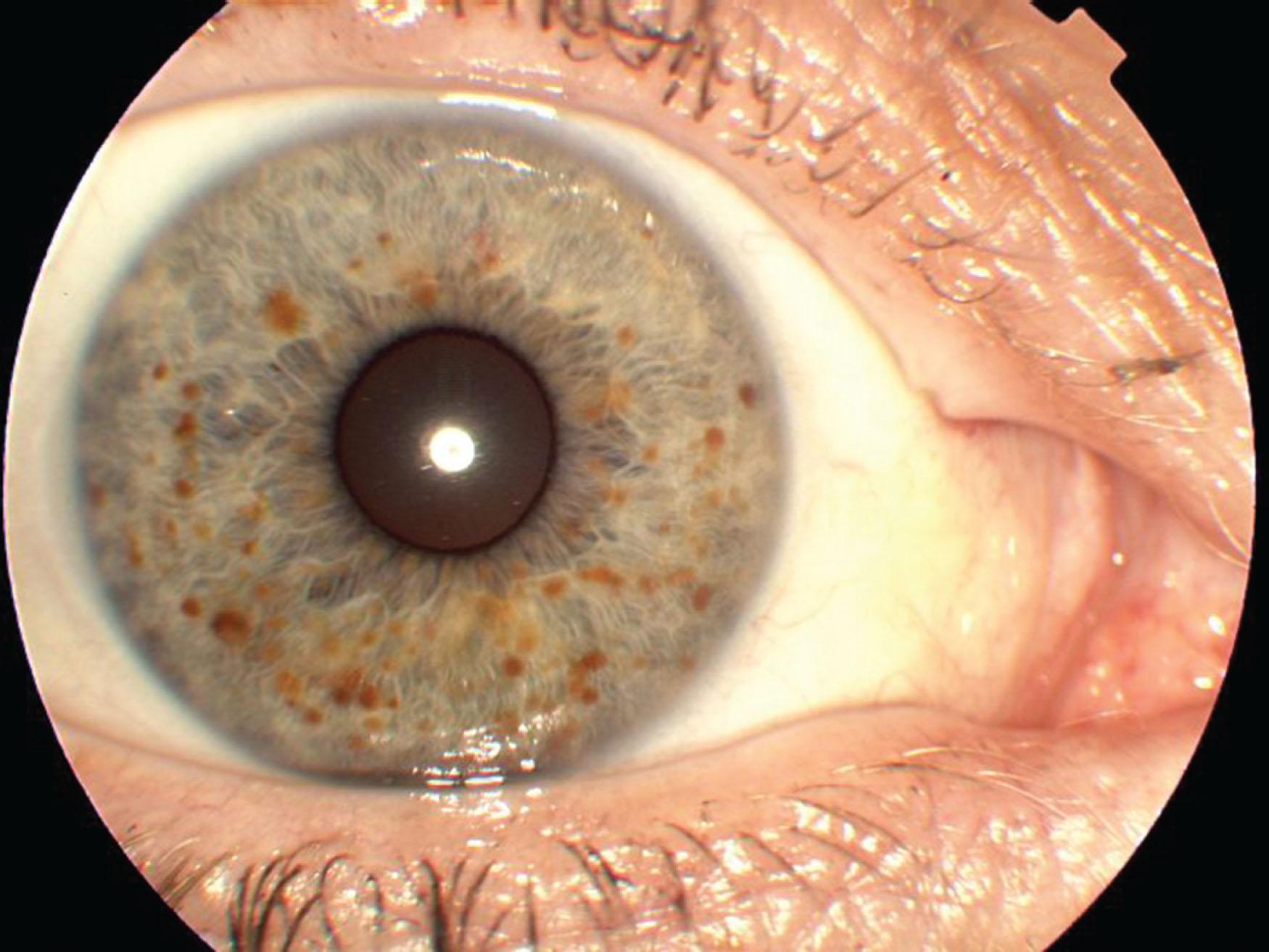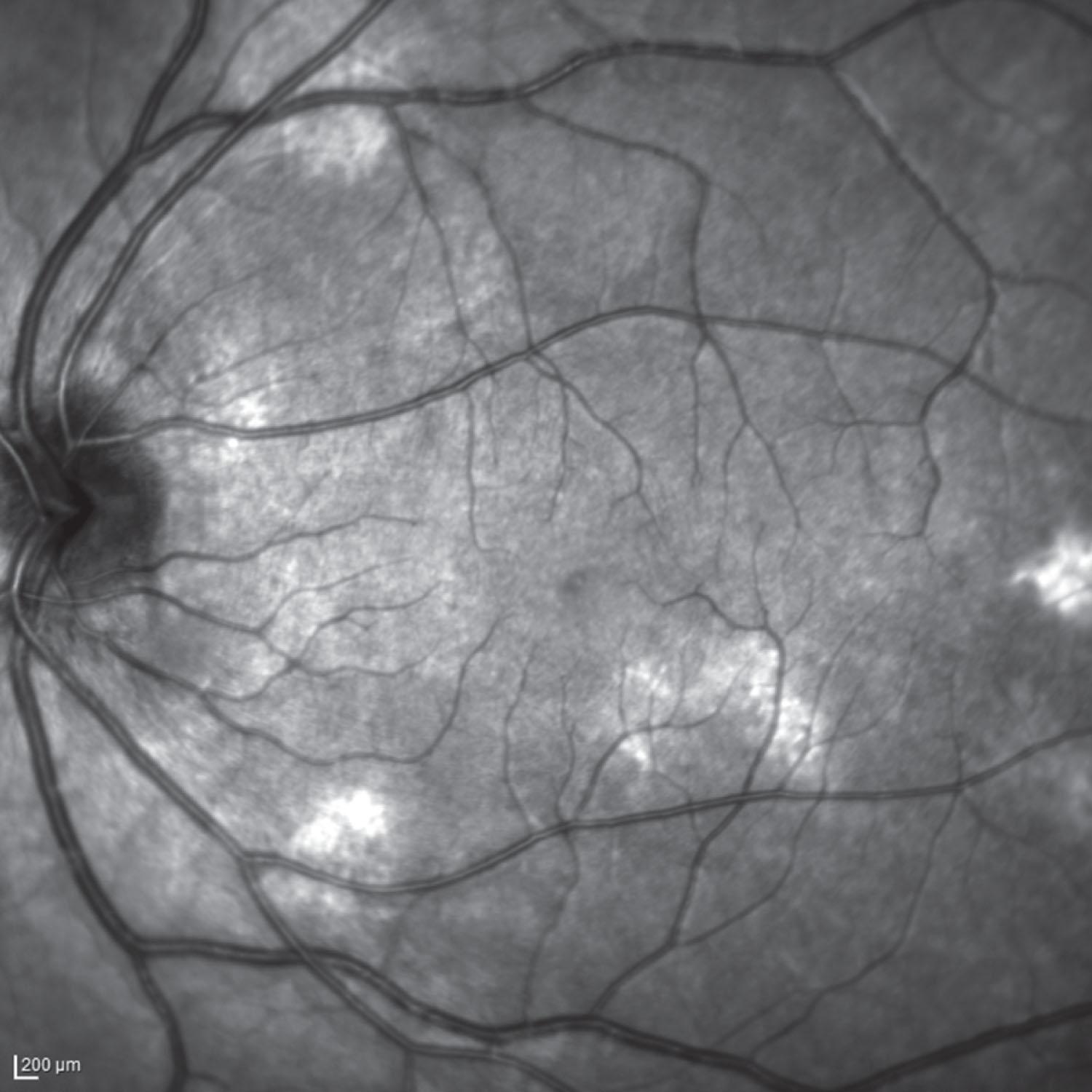Physical Address
304 North Cardinal St.
Dorchester Center, MA 02124
Dr Avery is supported by The Children’s Tumor Foundation, The Gilbert Family Foundation, and grants EY022673 (National Eye Institute), CA236536 (National Cancer Institute), and CA180886-S1 (National Cancer Institute) of the National Institutes of Health, Bethesda, MD, and grant W81XWH1910376 (United States Department of Defense).
Neurofibromatosis type 1 (NF1) is a very common genetic condition that most pediatric ophthalmologists will see frequently throughout their career. The much less common neurofibromatosis type 2 (NF2), while also being a tumor predisposition syndrome with café-au-lait macules and a similar name, has very different diagnostic and clinical features. The pediatric ophthalmologist plays a critical role in all facets of care in children with NF1 and NF2. Understanding the numerous ophthalmic manifestations, diagnostic criteria, and monitoring of NF1 and NF2 is essential to optimizing visual outcomes of these children with lifelong conditions.
NF1 occurs in roughly 1 in 3000 births; half of the cases are inherited from a parent and the other half occur sporadically. Regardless of the inheritance pattern, the approach to evaluating a child with suspected or confirmed NF1 is identical.
A comprehensive ophthalmologic examination should be performed in all children presenting for a suspicion of NF1 or for their first evaluation after meeting diagnostic criteria for NF1 by another provider – typically a geneticist, pediatrician or neurologist. The exam must include quantitative visual acuity, color vision testing, pupil testing, ocular motility and alignment as well as slit-lamp examination and indirect ophthalmoscopy. The child’s age and ability to cooperate may significantly impact the ophthalmologist’s success in completing these components of the examination. The importance of obtaining quantitative (i.e., preferential looking or traditional optotype methods) visual acuity (VA) rather than qualitative (i.e., fixation techniques) cannot be stressed enough. If the child’s best corrected VA is below normal for age and there are no other ophthalmic features to account for the abnormal vision, the child will need a brain MRI given the risk of an optic pathway glioma (OPG). Quantitative VA is also helpful if the child develops ophthalmic symptoms in the future and is found to have an OPG or any other ocular condition, enabling a determination if progressive vision loss has occurred over time.
Lisch nodules are small elevated hamartoma of the iris that increase in prevalence as the child ages. The seminal paper by Lubs and colleagues found that the prevalence of Lisch nodules was less than 5% in children under age 3 years, but markedly increased to 42% in the 3–4-year age group, with steady increases across ages with >90% of those between 15 and 20 years old manifesting Lisch nodules. Lisch nodules are best identified using a slit-lamp as this can confirm the elevation of these rounded dome-shaped hamartomas compared to the flat appearance of nevi or normal color variation of the iris. Individuals with dark irides appear to manifest light or even coffee-colored Lisch nodules compared to light iris individuals whose nodules appear to be dark ( Fig. 69.1 ). Lisch nodules are more common on the lower half of the iris, possibly because it receives more natural light exposure compared to the upper half. The total number of Lisch nodules has no relationship to the frequency or severity of other NF1-associated manifestations. In a child with unilateral café-au-lait macules and Lisch nodules on the same side, NF1 mosaicism should be considered. In younger and less cooperative children who cannot tolerate the slit-lamp, a 20D lens can be helpful to identify Lisch nodules. Although not part of the diagnostic criteria, the presence of iris, conjunctival or dermal juvenile xanthogranulomas (JXG) should raise the suspicion for NF1.

External findings such as pulsatile enophthalmos should also raise the suspicion for NF1 and prompt neuroimaging given the association with sphenoid wing dysplasia which is included as a diagnostic criterion. Plexiform neurofibromas can present with any of the following: orbital fullness, buphthalmos, ptosis, brow thickening or a boggy “bag of worms” feeling of the upper eyelid. Plexiform neurofibromas tend to track along the distribution of the fifth cranial nerve and are referred to as orbital, periorbital plexiform neurofibromas (OPPN).
The dilated fundus exam should focus on the presence of optic nerve anomalies (such as atrophy, edema, etc.) that may indicate NF1-associated CNS complications such as an OPG, hydrocephalus, or other associated pathologies like glaucoma. Although not seen by the examiner during ophthalmoscopy, choroidal abnormalities (CA) can be visualized on near-infrared images that are included in many optical coherence tomography (OCT) acquisitions ( Fig. 69.2 ). CAs are bright patches arising anywhere in the choroid, that occur in 60% to 100% of NF1 patients. They are not believed to represent significant pathology that requires monitoring. Although not published yet, the forthcoming revised diagnostic criteria for NF1 will include two or more CAs as a criterion based on the data above, but also because they are absent in Legius syndrome, a disorder that can be easily confused with NF1.

Other features that are more common in NF1 than the general population, but not part of the diagnostic criteria, include strabismus and refractive error.
OPPN and OPG are the two most common ophthalmologic conditions the pediatric ophthalmologist will manage in children with NF1. Although not exhaustive, the following provides recommendations for management based on the existing literature.
The upregulation of Ras due to a lack of neurofibromin drives the proliferation of perineural cells, mast cells, fibroblasts, and Schwann cells to form plexiform neurofibromas along multiple nerve branches. When plexiform neurofibromas involve the eyelid, orbital or orbital-facial regions – all of which follow the distribution of the trigeminal nerve, they are referred to as orbital periorbital plexiform neurofibromas (OPPN). All plexiform neurofibromas, not just OPPN, tend to show the greatest growth in children under 8 years old, although growth continues afterwards. The most comprehensive review of OPPN to date has been written by a multidisciplinary group of pediatric experts experienced with NF1 (neuro-ophthalmology, oculoplastics, neuro-oncology, neurology, genetics, and imaging).
The exact incidence of OPPN in children with NF1 is unknown, but is estimated to be less than 10%. The onset and appearance of OPPN occurs most frequently in the first 3 years of life, although some of the smaller “S”-shaped OPPN confined to the upper lid may go undiscovered for years if the ptosis is mild or absent.
Blepharoptosis is present in virtually all OPPNs with or without proptosis, edema of the upper and lower lids as well as strabismus. The lesions may be firm or soft, and some are described as feeling like a “bag of worms.”
Since OPPN can obscure the visual axis and are frequently associated with strabismus, a comprehensive exam should be performed at least twice a year until the child is no longer at risk for amblyopia. Since upwards of 25% of children have been reported to develop glaucoma, intraocular pressure should be measured at each exam. Depending on the degree of proptosis and the lid function, exposure keratopathy can also occur.
Become a Clinical Tree membership for Full access and enjoy Unlimited articles
If you are a member. Log in here